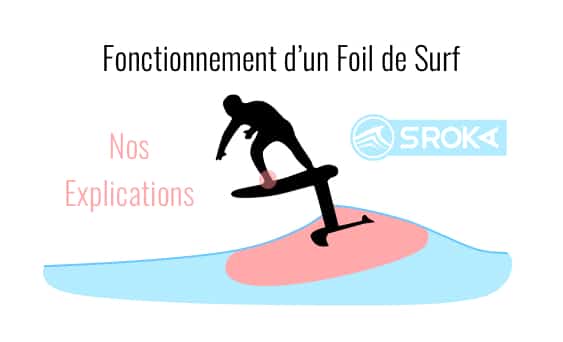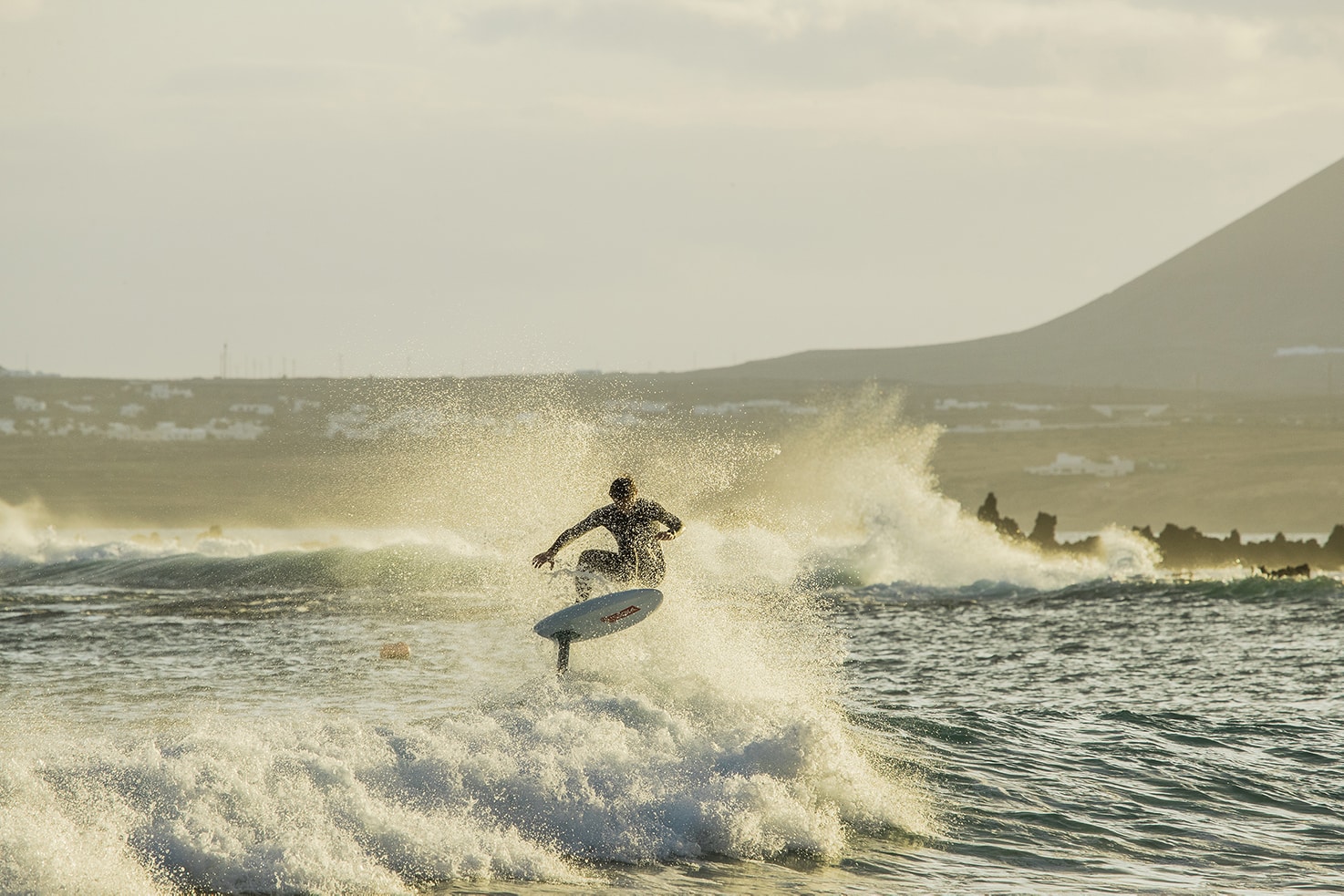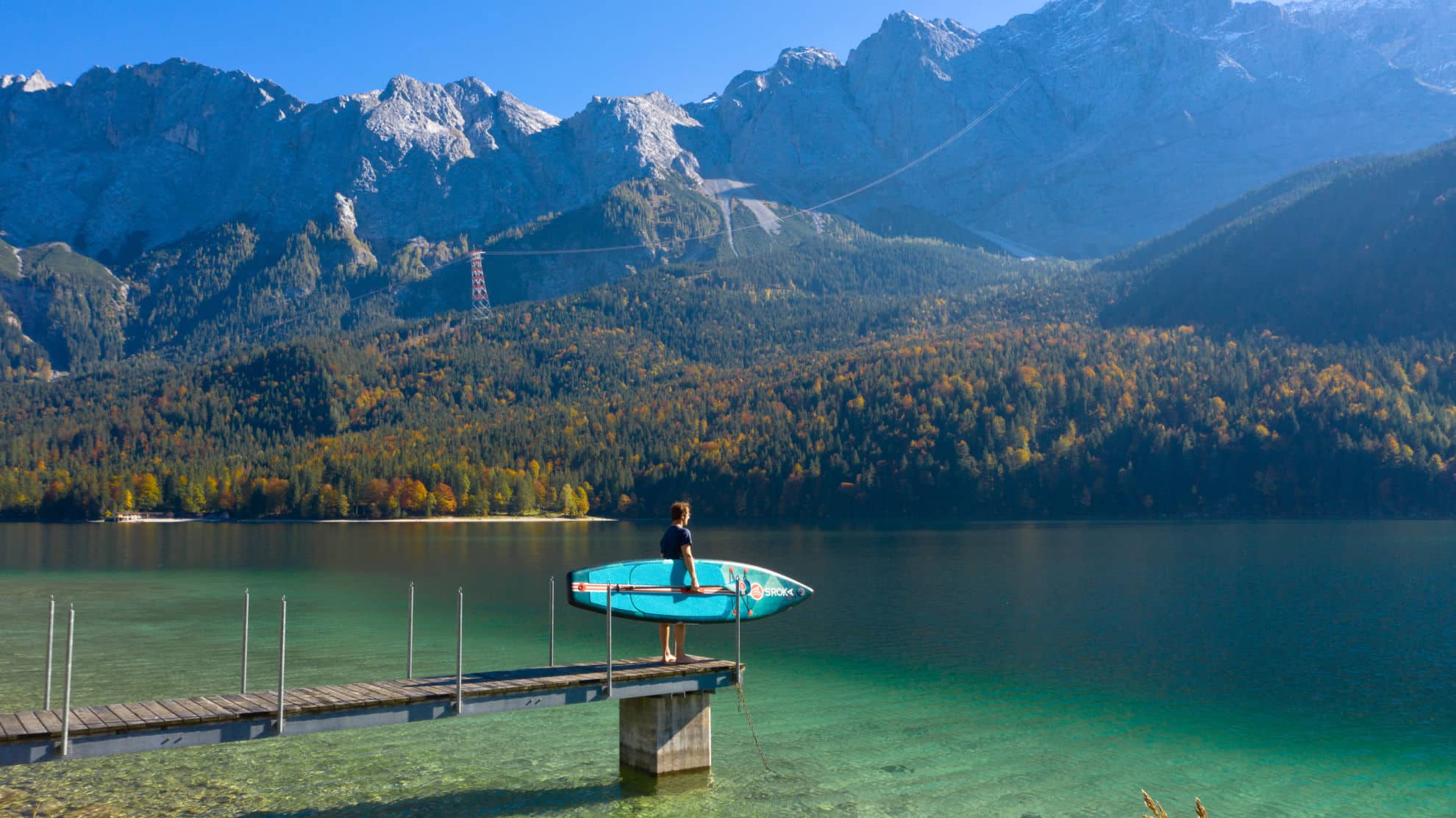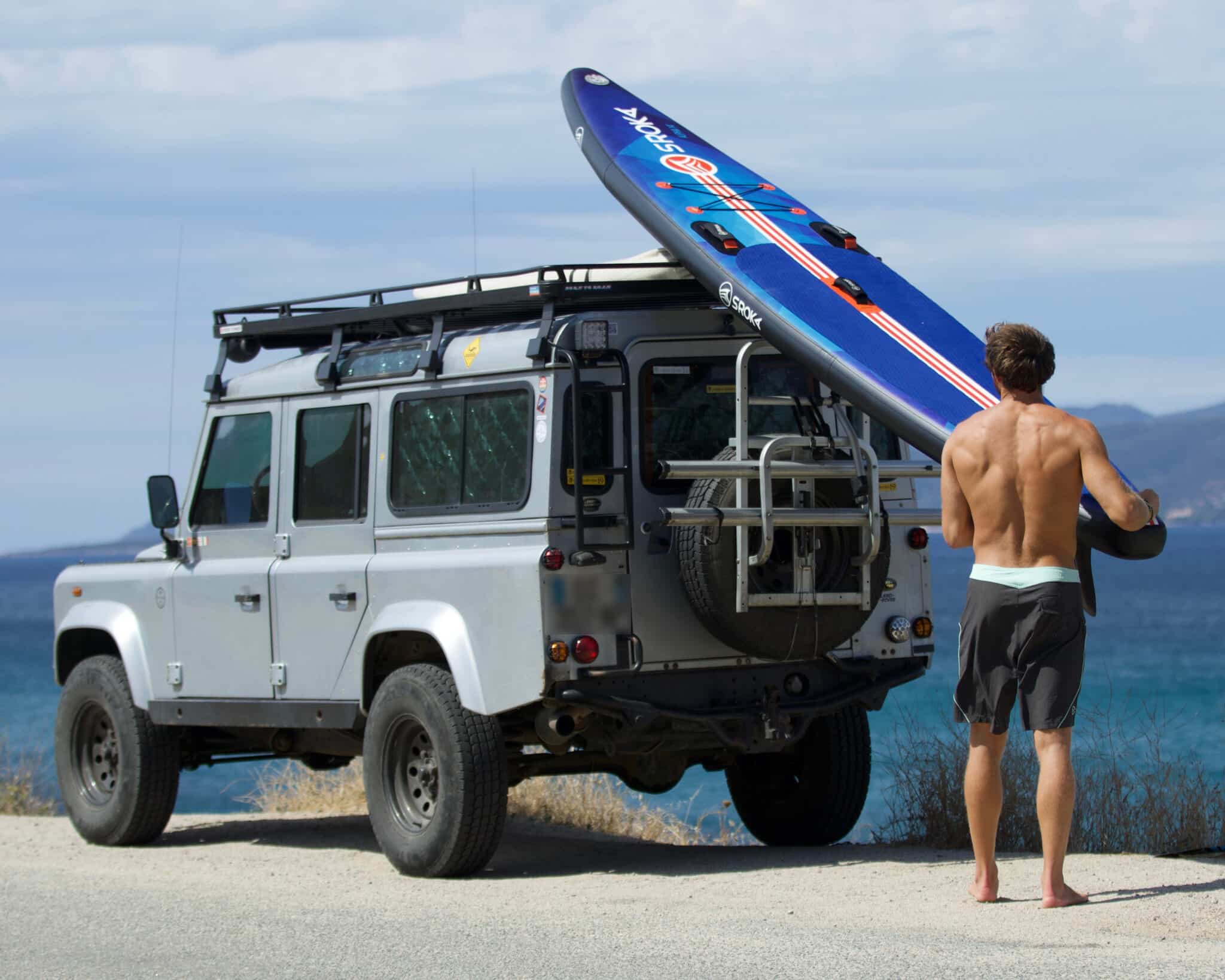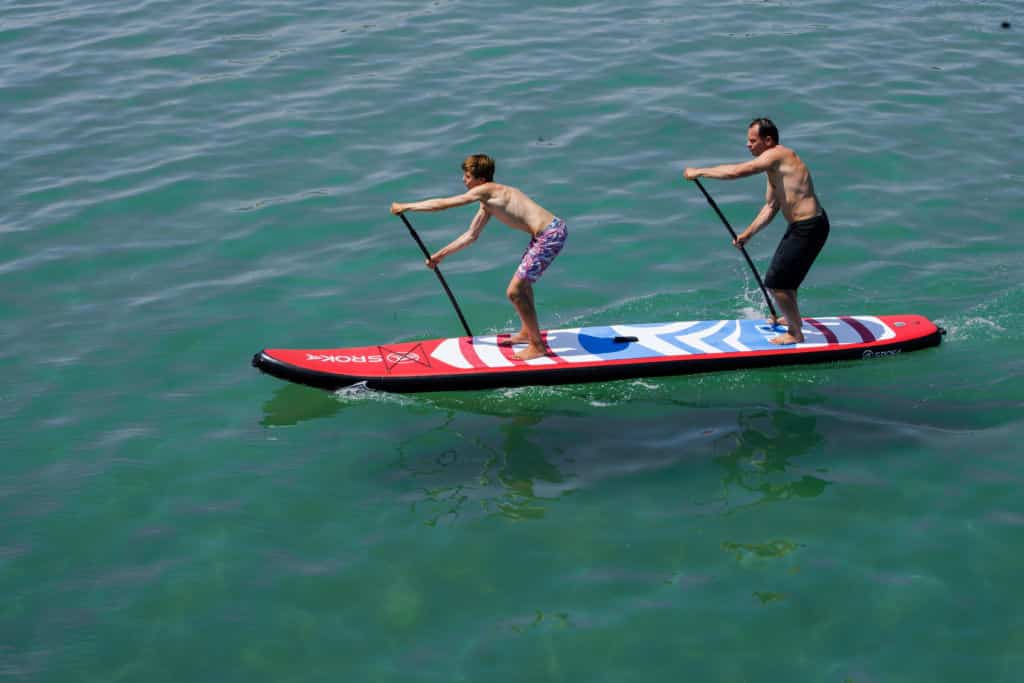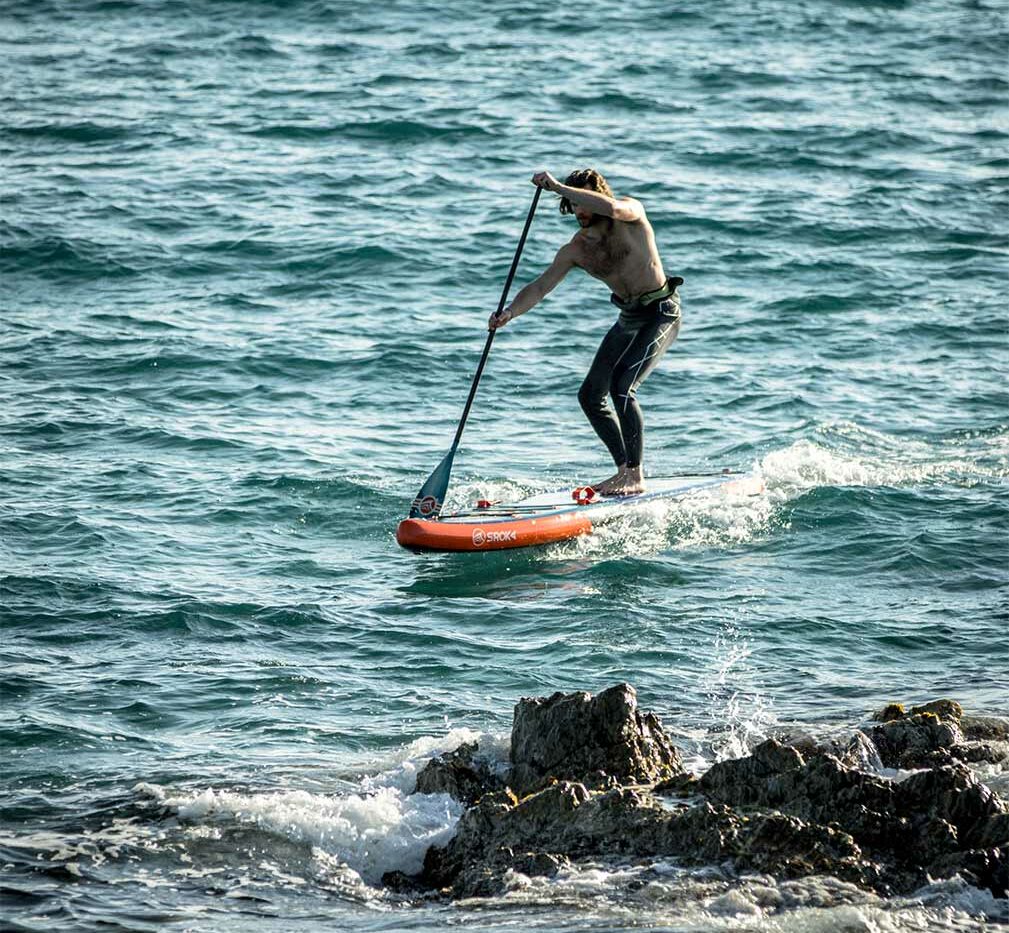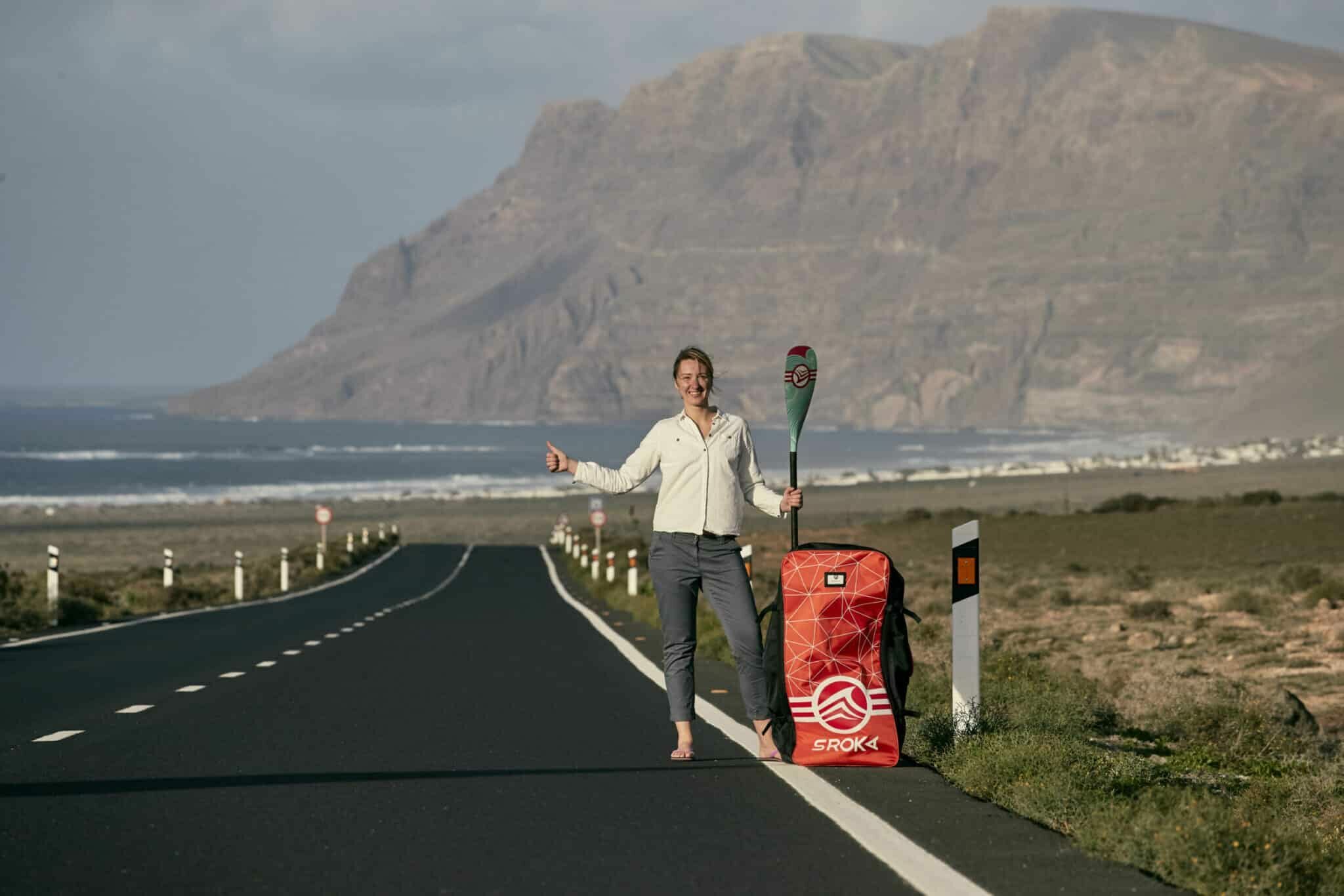 LE MAGAZINE
LE MAGAZINEHow to inflate an inflatable SUP

The inflatable stand-up paddle or SUP appeals to you and you want to take the plunge and equip yourself for the coming summer or spring. But once you’ve taken the plunge, you’re wondering “how do I inflate an inflatable paddle?
Inflating problems, although of negligible seriousness, are very common. Follow this article to the letter, and you’ll be sure to avoid a few hassles.
An under-inflated or over-inflated paddle is a problem:
- under-inflated, it runs the risk of “going bananas” and rapidly degrading due to the various folds it causes.
- If you over-inflate your SUP, the pvc welds may come unstuck, or even the drop stitch (the inner part that joins the deck to the hull and keeps the paddle flat), or it may turn into a sausage.
We’ll start by checking your equipment, then go over the key points of preparing your paddle for inflation, and finally a few more tips just after we’ve seen the inflation itself.
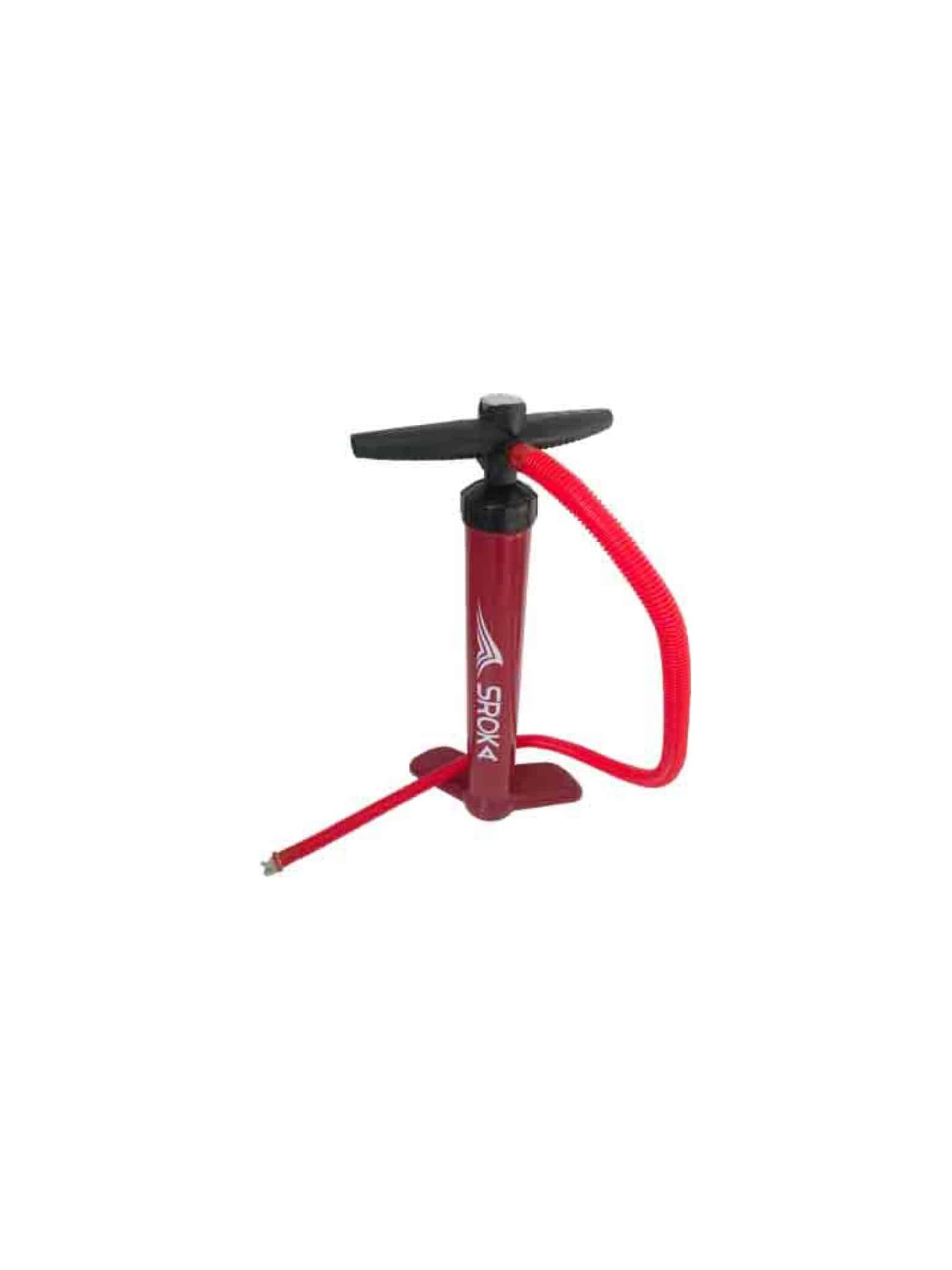
What you need
What equipment do we need to inflate your paddle? Roughly everything in the pack you ordered. That is:
- The SUP (it goes without saying)
- The high-pressure pump
- Fins
- The valve removal key
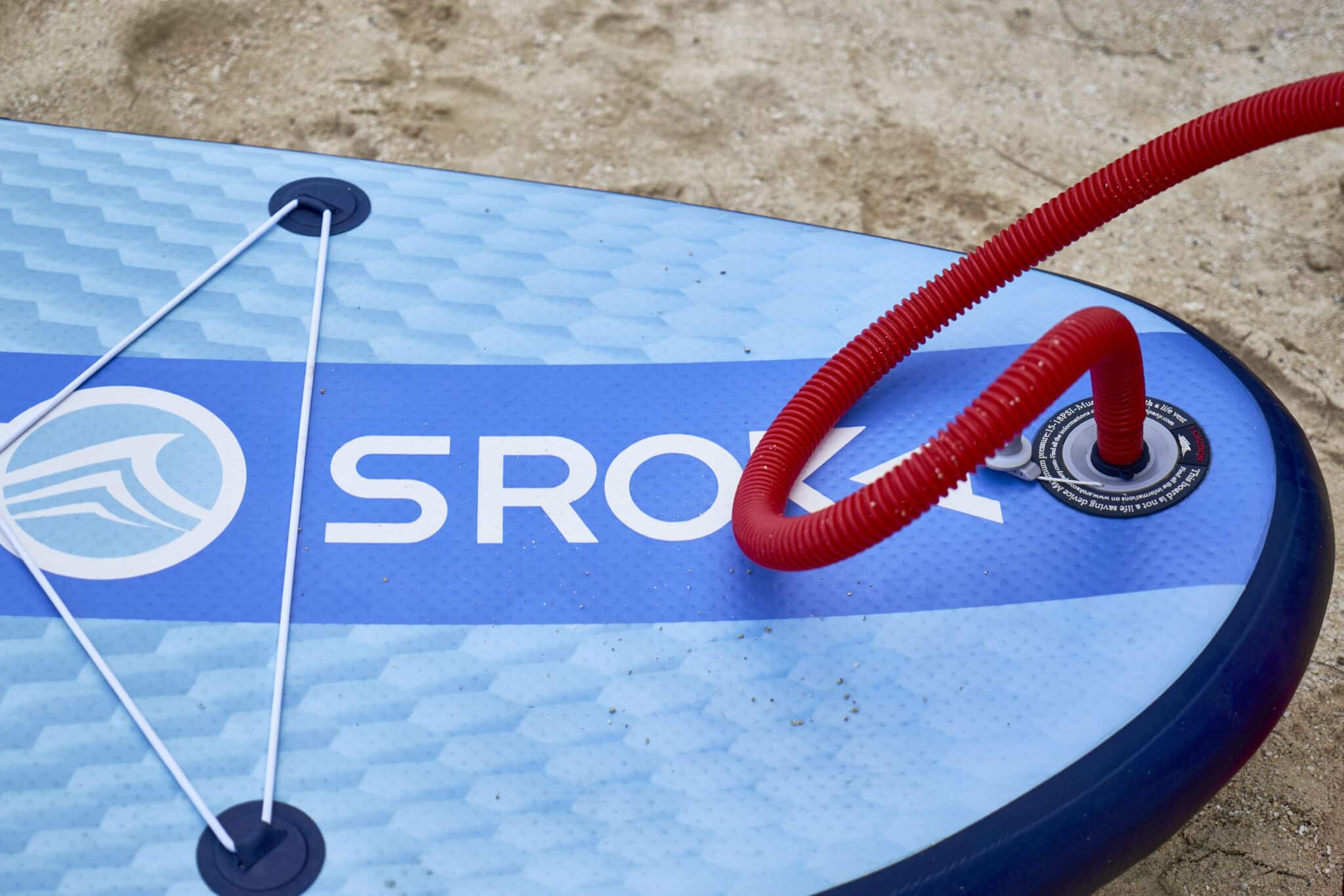
Preparing to inflate your paddle
Firstly, it’s important to find a suitable place to inflate your SUP, avoiding areas that could damage it, such as stones or asphalt, if you have to inflate it in a parking lot. (In the event that you have no choice, use the storage bag to protect your paddle from ground abrasion).
You should also choose a sheltered spot when the wind is strong, to prevent your paddle from flying off and injuring someone or damaging itself.
Before you start inflating, unfold your SUP and check that it’s in good condition. Also check that your pump is in working order and that your fins fit into the slots reserved on the hull of your SUP. Using the valve removal wrench, check that the valve is correctly tightened, as this could lead to leaks.
Steps to inflate a stand-up paddle
Your paddle is now deployed, in a safe place, and your equipment is up and running.
- Start by connecting your pump to your SUP. To do this, check that the valve preventing the air from escaping is in the inflation position, i.e. that the central part springs out. If this is not the case, turn it a quarter-turn, pressing lightly to bring it into the correct position.
- Next, connect the pump hose by turning it clockwise a quarter turn. In this case, you’ll need to pre-tension the pump hose in the opposite direction before connecting it, so that it holds in place without your help.
- You can now inflate your paddle to the pressure indicated around the valve or in the user manual. Start with the pump in mode 2, then switch to mode 1 when mode 2 becomes too difficult.
- Once the recommended pressure has been reached, disconnect the pump from SUP and close the valve cap. Finally, check that your paddle is rigid and has no appendages to prevent it from breaking.
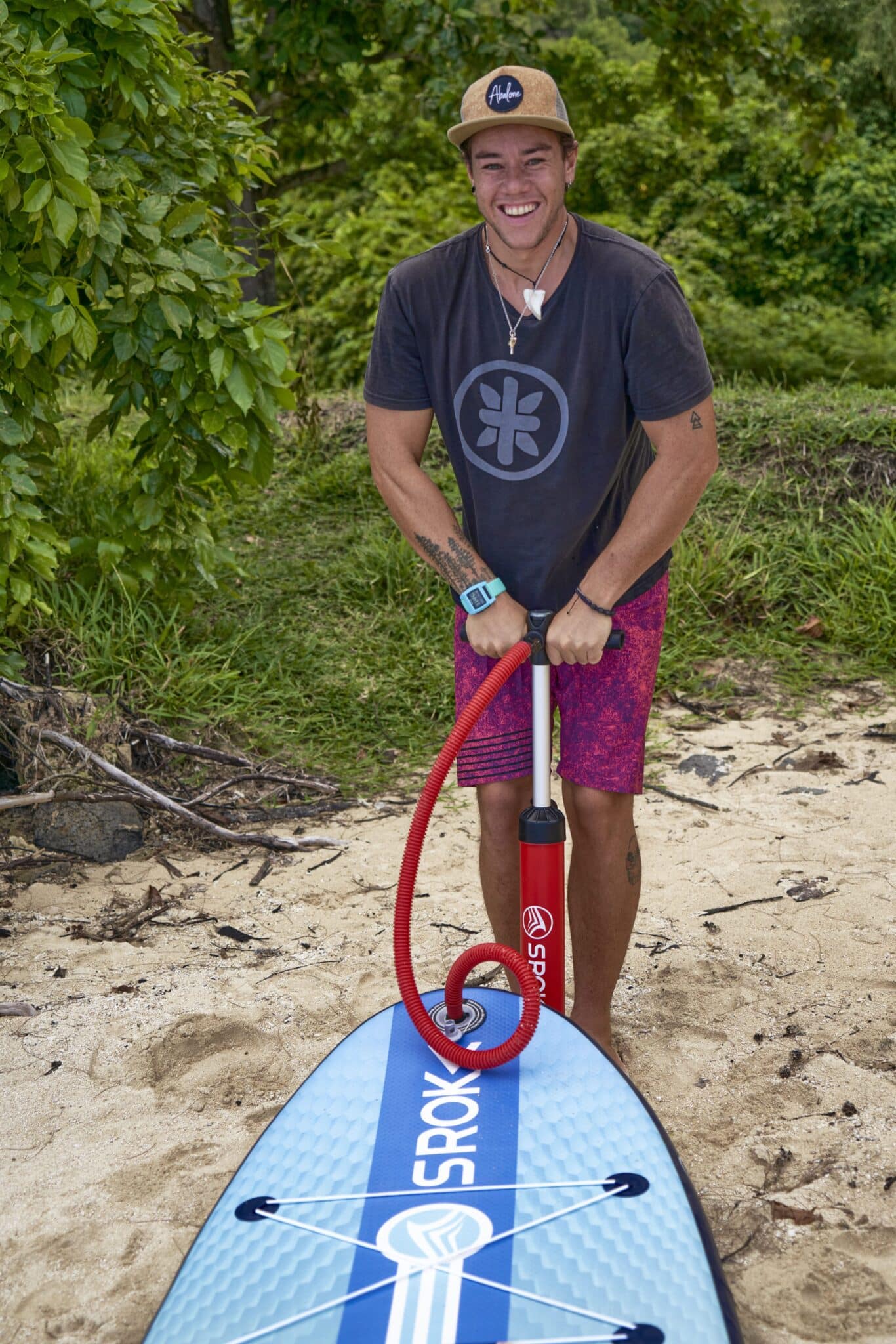
SROKA tips:
Paddle pressure varies according to the activities you want to do or your weight. For example, if you’re setting off on a SUP downwind, lowering your pressure slightly will enable you to roll up the waves better and avoid crashing and thus slowing down between swell trains.
Additional tips
To ensure an exceptionally long life for your Stand up paddle, make sure you never leave it in the sun when you’re not using it, especially in summer when the temperature rises. For your information, the human pain threshold is around 60 degrees Celsius, or even slightly below. On days when you can’t put your hand on a black surface (e.g. a car), the temperature of your paddle in direct sunlight is likely to soar, as well as being worn away by UV rays.
Conclusion
In short, choose a place where you won’t damage your equipment, check it and beware of the pressure you apply to your paddle. Once inflated, beware of the sun, which can wreak havoc in summer.
Finally, always be sure to practice safely, and avoid very windy or very cold days if you’re not equipped for them. And don’t forget that summer doesn’t always mean warm water: even when it’s 30 degrees outside, hypothermia is still possible when the water is 17 degrees, as is often the case in windy regions.
How do I inflate a paddle? You now have the answer. Now all you have to do is get out on the water and enjoy. Many other articles are available on our site to help you paddle, so don’t hesitate to take a look!
The SROKA team.
If you have any further questions, or if you have any other requests, please don’t hesitate to contact us!
 Le Magazine
Le Magazine



